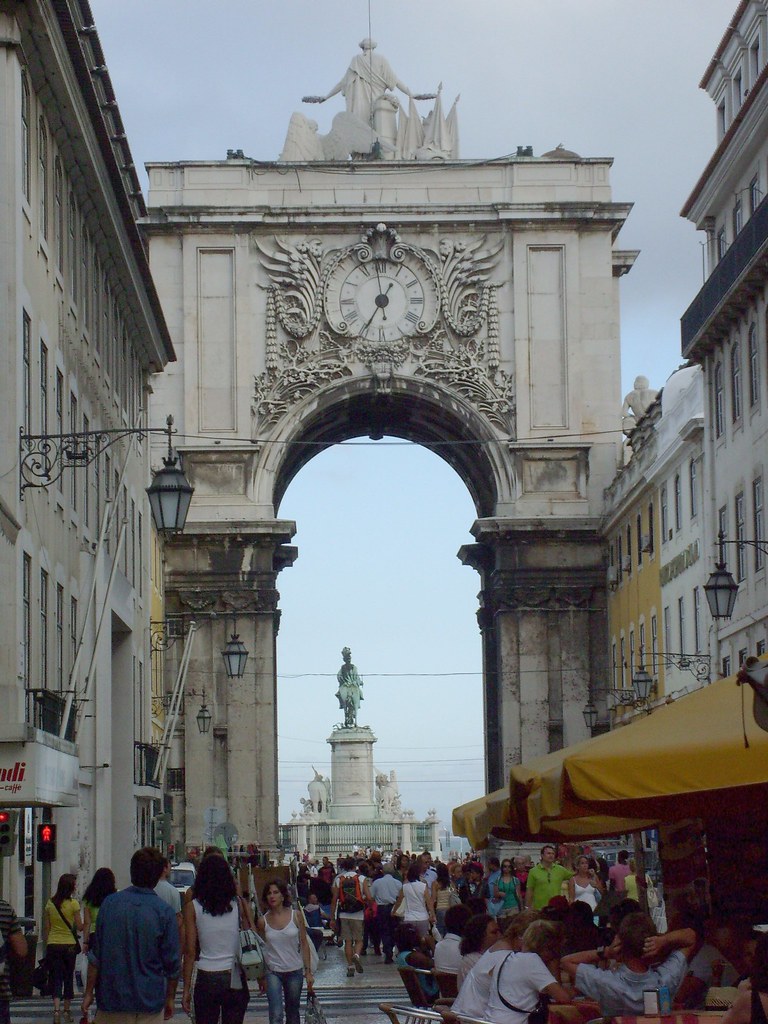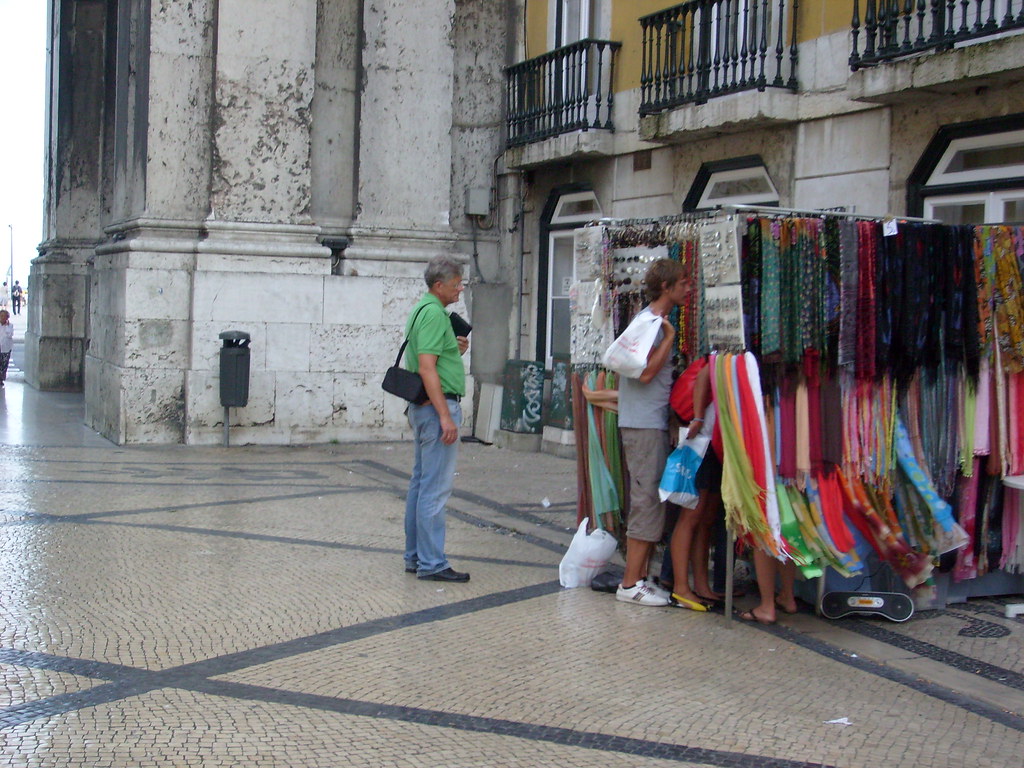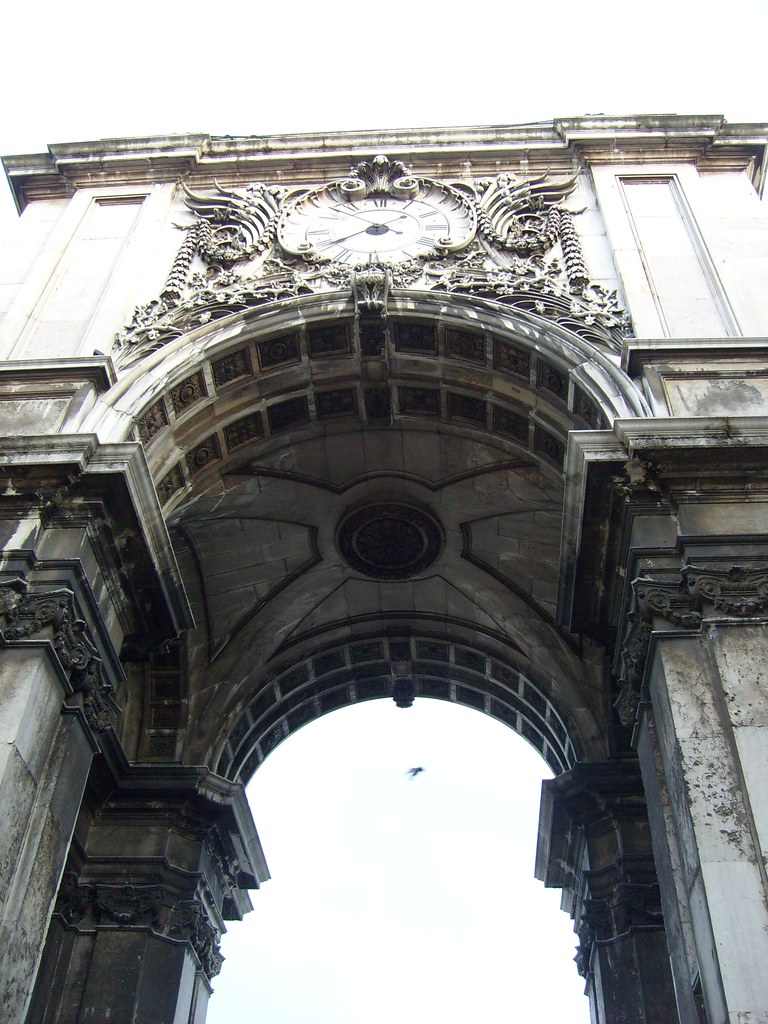Renovation of the Arch clock on Lisbon’s Rua Augusta
Hubert de Haro - Vice President, Espiral do Tempo
"Visitors and lovers of fine watches are sometimes surprised by how knowledgeable Portuguese watch collectors are. Some recall how in the 1940s, when the Nazis were blockading Europe, Portugal played a role in Swiss watch exports to America and Asia. However, Portugal’s connection with horology goes back much further than this.
A visitor to light-filled Lisbon today probably wouldn’t be expecting to see the Jaeger-LeCoultre name emblazoned on one of the Portuguese capital’s most emblematic monuments: the Triumphal Arch on Rua Augusta. This is just the visible face of a slightly crazy venture dreamed up by one of the country’s leading names in watches, Pedro Torres, who represents the Le Sentier firm in Portugal. After more than two years’ arduous negotiations with the Portuguese Institute for Heritage Protection, a protocol was finally signed on March 30th, 2007. Its aim is to restore to life the clock which for over a century has marked time for the Lisboans.
The earthquake from 1755
Horology historian Fernando Correio de Oliveira recounts the trials and tribulations of the Rua Augusta clock over the centuries*. Its legendary square, now occupied by ministries but once the seat of royal power, was devastated in the great earthquake that struck Lisbon in 1755. Voltaire relates the disastrous consequences on the city’s population in Candide. A vast part of Lisbon was razed to the ground, including the clock tower - which King João V (1680-1750) had commissioned from the Italian architect Canevari and financed with gold from Brazil - and its sumptuous clock, no doubt Flemish. The city’s reconstruction, led by the Marquis of Pombal, would take almost a century to complete. It was only on December 4th, 1883 that the Arch’s clock was brought back into service.
For this, Augusto Justiniano de Araújo, founder of the Lisbon school of watchmaking, transformed a seventeenth-century clock taken from the Convent of Jesus. It had a verge and foliot escapement, and neither dial nor hands. Time was sounded by a bell mounted at the top of the Arch. De Araújo replaced the foliot with a balance, thereby significantly improving the clock’s accuracy, and added a dial, hour and minute hands.
Manuel Francisco Cousinha
Lack of maintenance meant the clock had to be replaced at the turn of the last century. The task fell to Manuel Francisco Cousinha, one of the great clockmakers of that time. Fittingly, his grandson will lead the functional and aesthetic restoration of both this clock and the seventeen-century clock, which had been left to neglect inside the Arch.
Only a privileged few were able to visit the inside of the Arch on Rua Augusta prior to the start of renovation work on May 30th, 2007. They included Jérôme Lambert, CEO of Jaeger-LeCoultre who, last year, had the flair to support this local initiative. Work is expected to reach completion by early autumn.
To commemorate this partnership, Manufacture Jaeger-LeCoultre will launch, in Portugal, a limited edition of 32 (a reference to the number of years it took to build the Arch) Reverso Squadra Hometime watches in pink gold with a special engraving of the Arch." [*]
Hubert de Haro - Vice President, Espiral do Tempo
"Visitors and lovers of fine watches are sometimes surprised by how knowledgeable Portuguese watch collectors are. Some recall how in the 1940s, when the Nazis were blockading Europe, Portugal played a role in Swiss watch exports to America and Asia. However, Portugal’s connection with horology goes back much further than this.
A visitor to light-filled Lisbon today probably wouldn’t be expecting to see the Jaeger-LeCoultre name emblazoned on one of the Portuguese capital’s most emblematic monuments: the Triumphal Arch on Rua Augusta. This is just the visible face of a slightly crazy venture dreamed up by one of the country’s leading names in watches, Pedro Torres, who represents the Le Sentier firm in Portugal. After more than two years’ arduous negotiations with the Portuguese Institute for Heritage Protection, a protocol was finally signed on March 30th, 2007. Its aim is to restore to life the clock which for over a century has marked time for the Lisboans.
The earthquake from 1755
Horology historian Fernando Correio de Oliveira recounts the trials and tribulations of the Rua Augusta clock over the centuries*. Its legendary square, now occupied by ministries but once the seat of royal power, was devastated in the great earthquake that struck Lisbon in 1755. Voltaire relates the disastrous consequences on the city’s population in Candide. A vast part of Lisbon was razed to the ground, including the clock tower - which King João V (1680-1750) had commissioned from the Italian architect Canevari and financed with gold from Brazil - and its sumptuous clock, no doubt Flemish. The city’s reconstruction, led by the Marquis of Pombal, would take almost a century to complete. It was only on December 4th, 1883 that the Arch’s clock was brought back into service.
For this, Augusto Justiniano de Araújo, founder of the Lisbon school of watchmaking, transformed a seventeenth-century clock taken from the Convent of Jesus. It had a verge and foliot escapement, and neither dial nor hands. Time was sounded by a bell mounted at the top of the Arch. De Araújo replaced the foliot with a balance, thereby significantly improving the clock’s accuracy, and added a dial, hour and minute hands.
Manuel Francisco Cousinha
Lack of maintenance meant the clock had to be replaced at the turn of the last century. The task fell to Manuel Francisco Cousinha, one of the great clockmakers of that time. Fittingly, his grandson will lead the functional and aesthetic restoration of both this clock and the seventeen-century clock, which had been left to neglect inside the Arch.
Only a privileged few were able to visit the inside of the Arch on Rua Augusta prior to the start of renovation work on May 30th, 2007. They included Jérôme Lambert, CEO of Jaeger-LeCoultre who, last year, had the flair to support this local initiative. Work is expected to reach completion by early autumn.
To commemorate this partnership, Manufacture Jaeger-LeCoultre will launch, in Portugal, a limited edition of 32 (a reference to the number of years it took to build the Arch) Reverso Squadra Hometime watches in pink gold with a special engraving of the Arch." [*]










6 comments:
Triple wow. Awesome photos and fabtastic, and, might I say, well written, history. You know me and clocks, lol. Muito bom!!
Só agora tive tempo para ver o seu blogue do princípio até ao fim... e dou os meus parabéns pelo excelente trabalho! Grande cartão de visita cá do burgo, sim senhora! :-)
Wow. That is the kind of place that seems to give off a magnetic force, transforming your readers to ask the existential question, "Why can't I go there and just be there for the rest of my life?".
Have a great week ahead Mary Jo Em.
Fabulous pictures and I appreciate the detailed descriptions. I'm sure there was a lot more that you wanted to include. Great job.
I see that you love Almodovar. "Women on the Verge of a Nervous Breakdown" is one of my all time favorite movies.
It is a very well written post with some wonderful town images. Lisbon looks like such a beautiful city.
Post a Comment